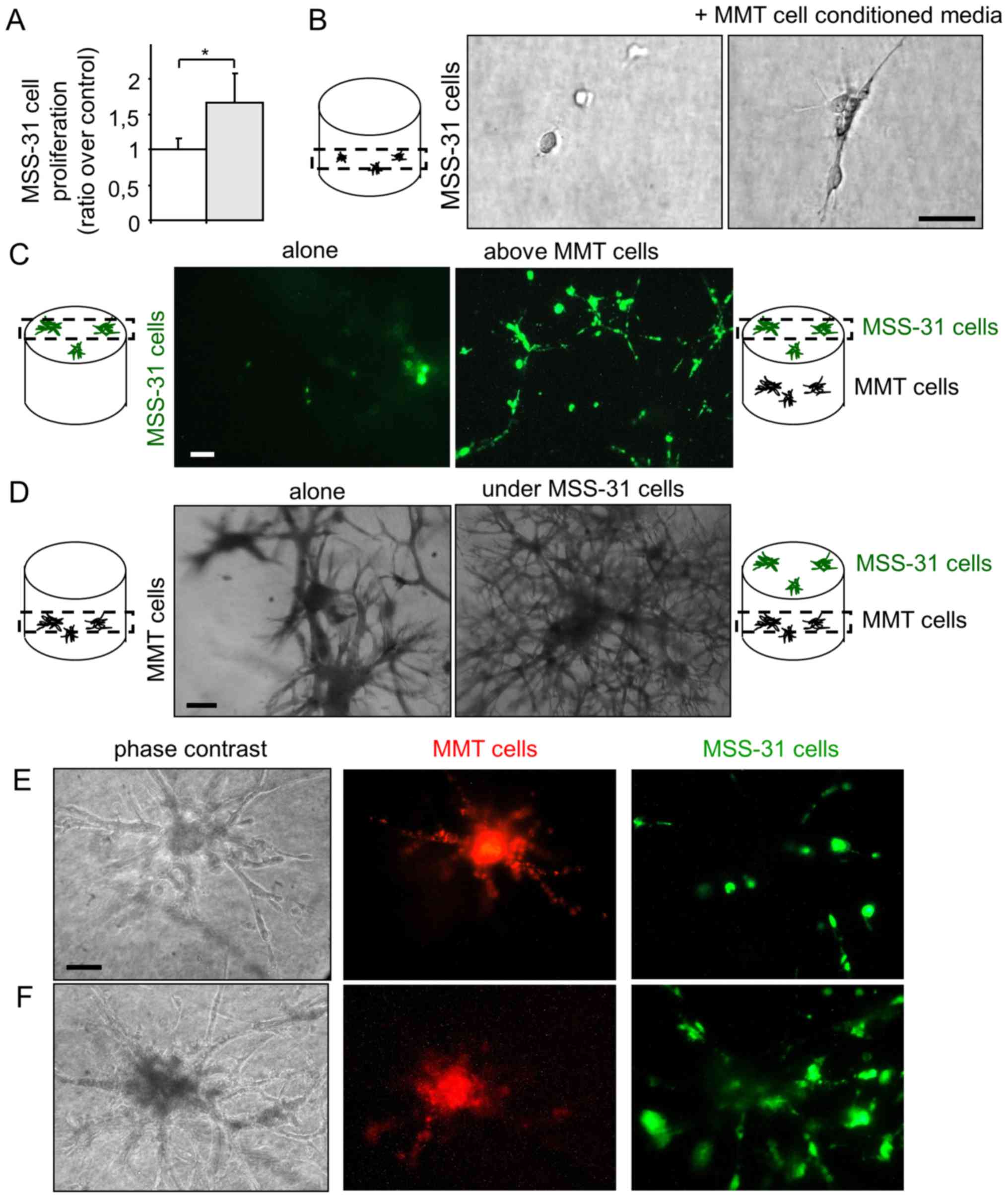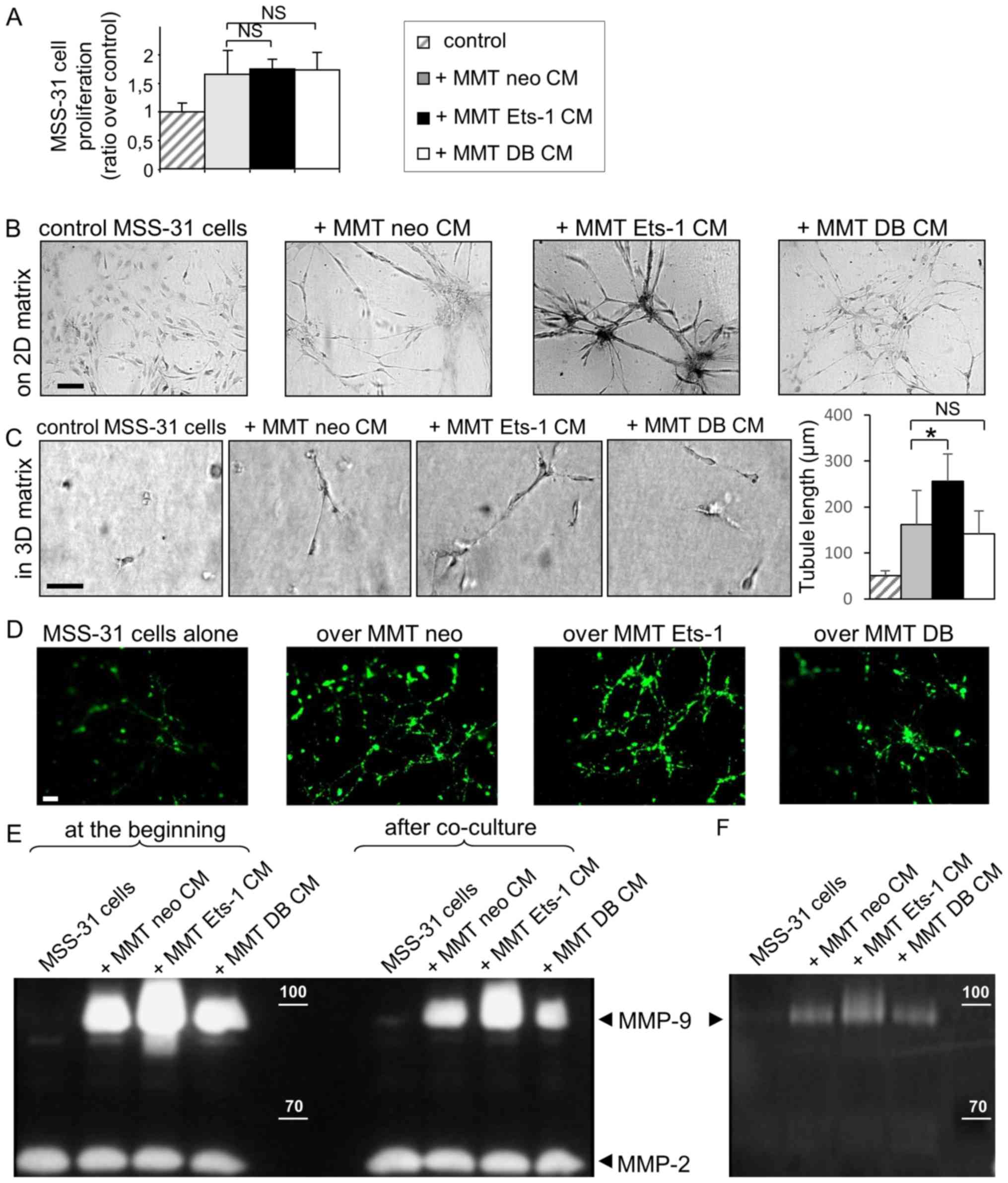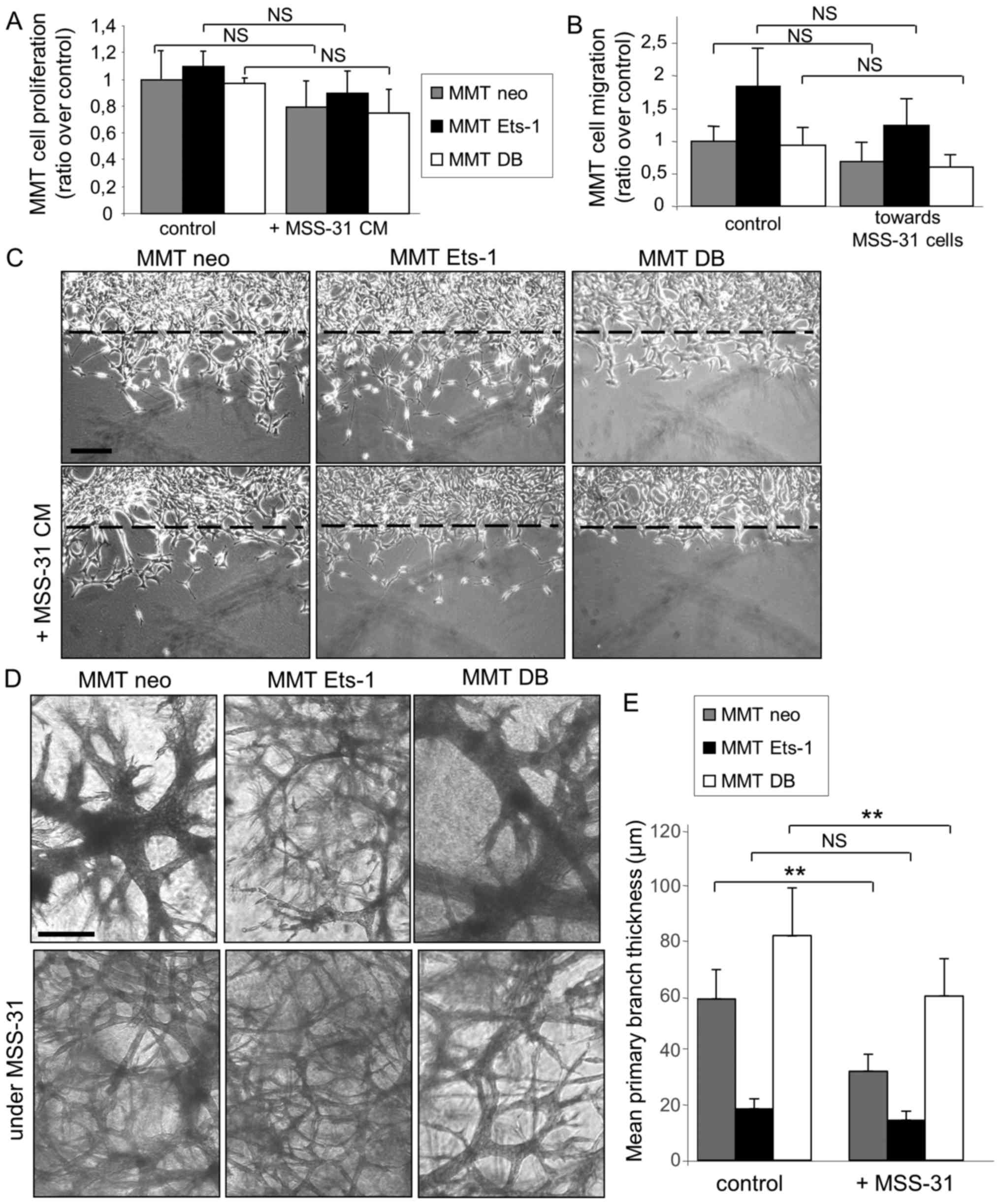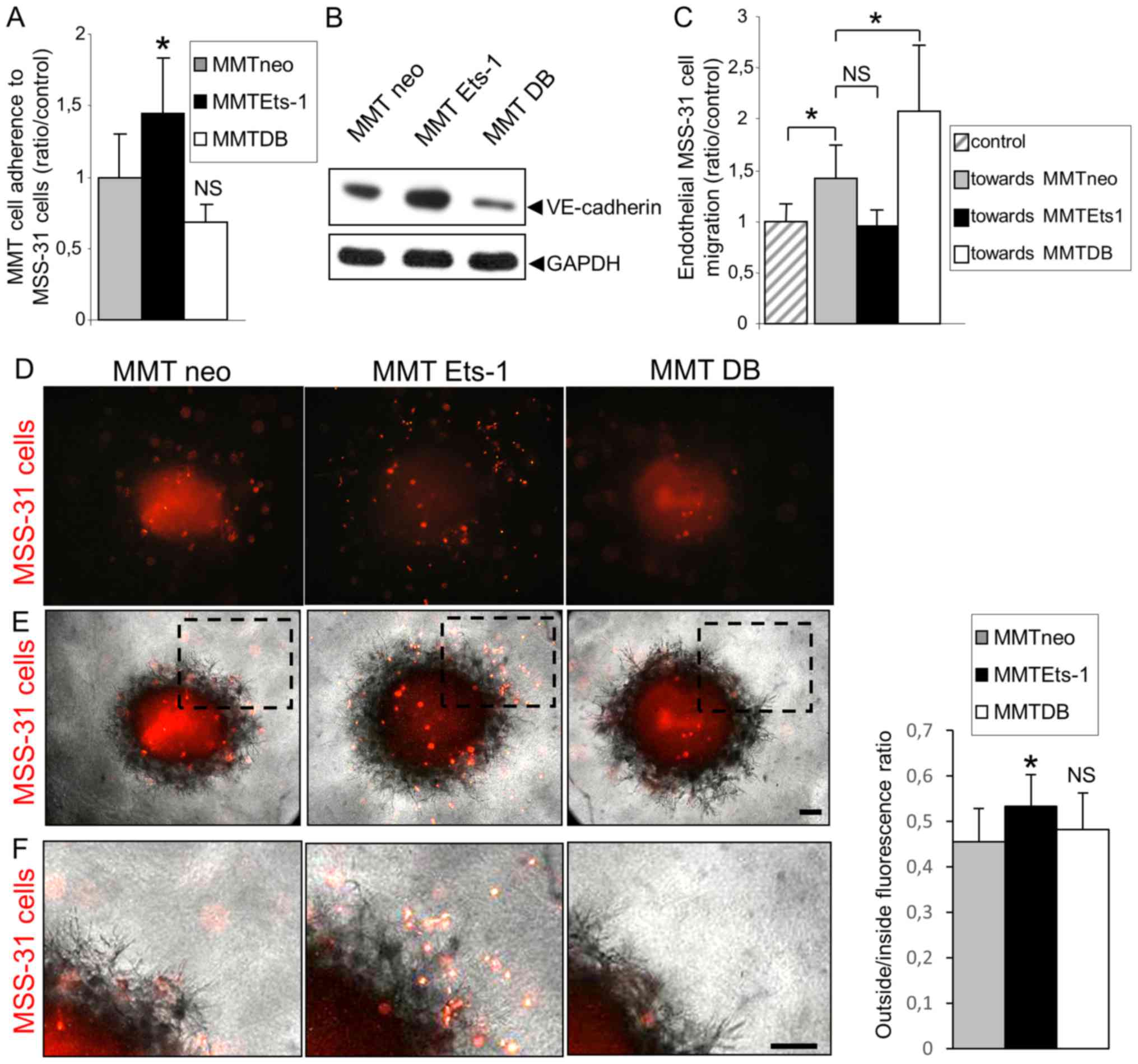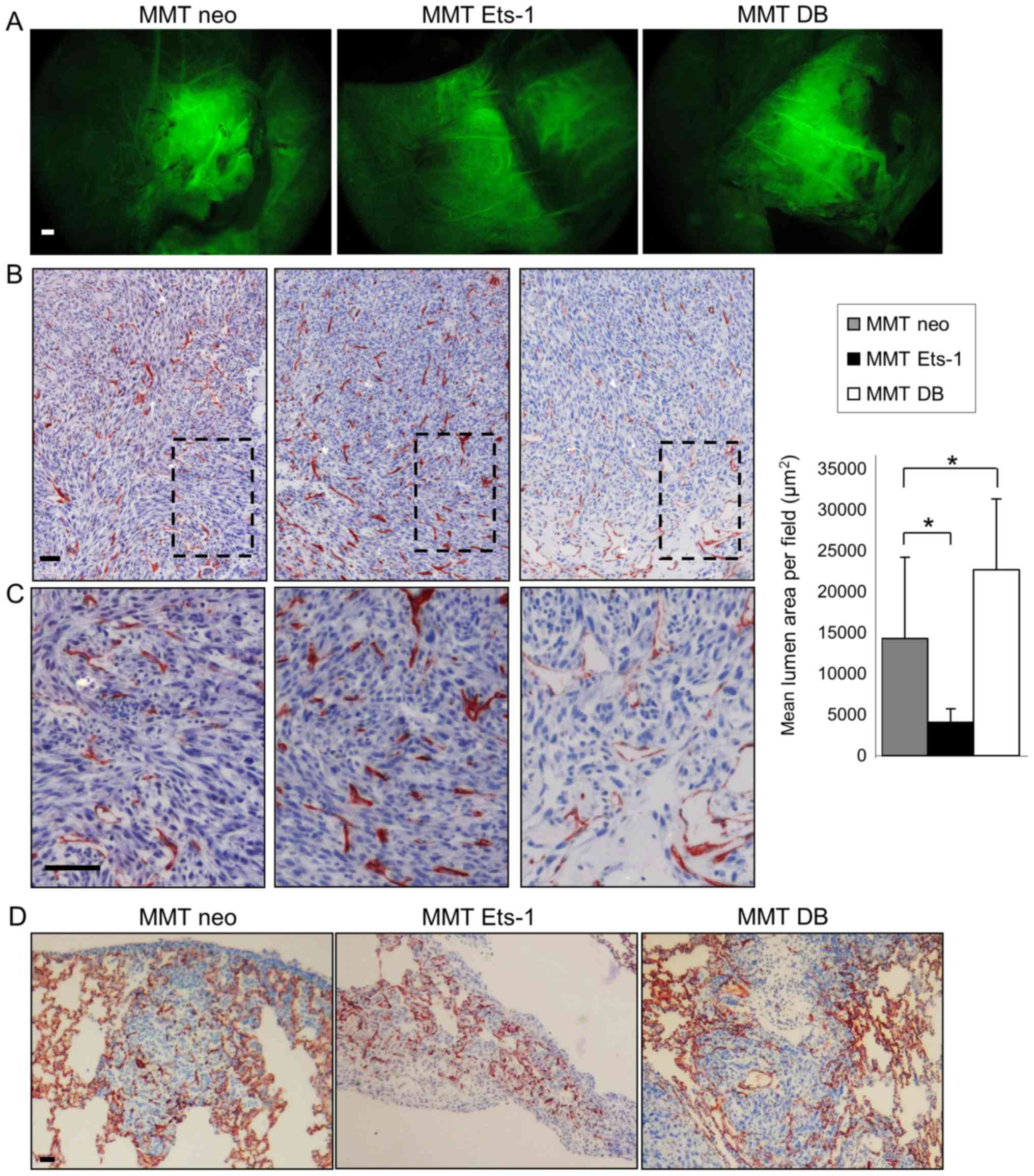|
1
|
Ferlay J, Soerjomataram I, Dikshit R, Eser
S, Mathers C, Rebelo M, Parkin DM, Forman D and Bray F: Cancer
incidence and mortality worldwide: Sources, methods and major
patterns in GLOBOCAN. 2012.Int J Cancer. 136:E359–E386. 2015.
View Article : Google Scholar
|
|
2
|
Hansen S, Grabau DA, Sørensen FB, Bak M,
Vach W and Rose C: The prognostic value of angiogenesis by Chalkley
counting in a confirmatory study design on 836 breast cancer
patients. Clin Cancer Res. 6:139–146. 2000.PubMed/NCBI
|
|
3
|
Carmeliet P and Jain RK: Molecular
mechanisms and clinical applications of angiogenesis. Nature.
473:298–307. 2011. View Article : Google Scholar : PubMed/NCBI
|
|
4
|
Aalders KC, Tryfonidis K, Senkus E and
Cardoso F: Anti-angiogenic treatment in breast cancer: Facts,
successes, failures and future perspectives. Cancer Treat Rev.
53:98–110. 2017. View Article : Google Scholar : PubMed/NCBI
|
|
5
|
Sivridis E, Giatromanolaki A and
Koukourakis MI: The vascular network of tumours - what is it not
for? J Pathol. 201:173–180. 2003. View Article : Google Scholar : PubMed/NCBI
|
|
6
|
Span PN, Manders P, Heuvel JJ, Thomas CMG,
Bosch RR, Beex LVAM and Sweep CGJ: Expression of the transcription
factor Ets-1 is an independent prognostic marker for relapse-free
survival in breast cancer. Oncogene. 21:8506–8509. 2002. View Article : Google Scholar : PubMed/NCBI
|
|
7
|
Kola I, Brookes S, Green AR, Garber R,
Tymms M, Papas TS and Seth A: The Ets1 transcription factor is
widely expressed during murine embryo development and is associated
with mesodermal cells involved in morphogenetic processes such as
organ formation. Proc Natl Acad Sci USA. 90:7588–7592. 1993.
View Article : Google Scholar : PubMed/NCBI
|
|
8
|
Furlan A, Vercamer C, Desbiens X and
Pourtier A: Ets-1 triggers and orchestrates the malignant phenotype
of mammary cancer cells within their matrix environment. J Cell
Physiol. 215:782–793. 2008. View Article : Google Scholar : PubMed/NCBI
|
|
9
|
Furlan A, Vercamer C, Bouali F, Damour I,
Chotteau-Lelievre A, Wernert N, Desbiens X and Pourtier A: Ets-1
controls breast cancer cell balance between invasion and growth.
Int J Cancer. 135:2317–2328. 2014. View Article : Google Scholar : PubMed/NCBI
|
|
10
|
Yamada KM and Cukierman E: Modeling tissue
morphogenesis and cancer in 3D. Cell. 130:601–610. 2007. View Article : Google Scholar : PubMed/NCBI
|
|
11
|
Mattot V, Vercamer C, Soncin F, Calmels T,
Huguet C, Fafeur V and Vandenbunder B: Constitutive expression of
the DNA-binding domain of Ets1 increases endothelial cell adhesion
and stimulates their organization into capillary-like structures.
Oncogene. 19:762–772. 2000. View Article : Google Scholar : PubMed/NCBI
|
|
12
|
Yanai N, Satoh T and Obinata M:
Endothelial cells create a hematopoietic inductive microenvironment
preferential to erythropoiesis in the mouse spleen. Cell Struct
Funct. 16:87–93. 1991. View Article : Google Scholar : PubMed/NCBI
|
|
13
|
Bradford MM: A rapid and sensitive method
for the quantitation of microgram quantities of protein utilizing
the principle of protein-dye binding. Anal Biochem. 72:248–254.
1976. View Article : Google Scholar : PubMed/NCBI
|
|
14
|
Pourtier-Manzanedo A, Vercamer C, Van
Belle E, Mattot V, Mouquet F and Vandenbunder B: Expression of an
Ets-1 dominant-negative mutant perturbs normal and tumor
angiogenesis in a mouse ear model. Oncogene. 22:1795–1806. 2003.
View Article : Google Scholar : PubMed/NCBI
|
|
15
|
Arnaoutova I, George J, Kleinman HK and
Benton G: The endothelial cell tube formation assay on basement
membrane turns 20: State of the science and the art. Angiogenesis.
12:267–274. 2009. View Article : Google Scholar : PubMed/NCBI
|
|
16
|
Mira E, Lacalle RA, Buesa JM, de Buitrago
GG, Jiménez-Baranda S, Gómez-Moutón C, Martínez-A C and Mañes S:
Secreted MMP9 promotes angiogenesis more efficiently than
constitutive active MMP9 bound to the tumor cell surface. J Cell
Sci. 117:1847–1857. 2004. View Article : Google Scholar : PubMed/NCBI
|
|
17
|
Hendrix MJC, Seftor EA, Hess AR and Seftor
REB: Vasculogenic mimicry and tumour-cell plasticity: Lessons from
melanoma. Nat Rev Cancer. 3:411–421. 2003. View Article : Google Scholar : PubMed/NCBI
|
|
18
|
Le Bras A, Lionneton F, Mattot V, Lelièvre
E, Caetano B, Spruyt N and Soncin F: HIF-2alpha specifically
activates the VE-cadherin promoter independently of hypoxia and in
synergy with Ets-1 through two essential ETS-binding sites.
Oncogene. 26:7480–7489. 2007. View Article : Google Scholar : PubMed/NCBI
|
|
19
|
Leroy-Dudal J, Demeilliers C, Gallet O,
Pauthe E, Dutoit S, Agniel R, Gauduchon P and Carreiras F:
Transmigration of human ovarian adenocarcinoma cells through
endothelial extracellular matrix involves alphav integrins and the
participation of MMP2. Int J Cancer. 114:531–543. 2005. View Article : Google Scholar
|
|
20
|
Bahary N and Zon LI: Development.
Endothelium - chicken soup for the endoderm. Science. 294:530–531.
2001. View Article : Google Scholar : PubMed/NCBI
|
|
21
|
Lammert E, Cleaver O and Melton D:
Induction of pancreatic differentiation by signals from blood
vessels. Science. 294:564–567. 2001. View Article : Google Scholar : PubMed/NCBI
|
|
22
|
Folkman J: Tumor angiogenesis: Therapeutic
implications. N Engl J Med. 285:1182–1186. 1971. View Article : Google Scholar : PubMed/NCBI
|
|
23
|
Rak J, Filmus J and Kerbel RS: Reciprocal
paracrine interactions between tumour cells and endothelial cells:
The ‘angiogenesis progression’ hypothesis. Eur J Cancer.
32A:2438–2450. 1996. View Article : Google Scholar : PubMed/NCBI
|
|
24
|
Barrett JM, Mangold KA, Jilling T and Kaul
KL: Bi-directional interactions of prostate cancer cells and bone
marrow endothelial cells in three-dimensional culture. Prostate.
64:75–82. 2005. View Article : Google Scholar : PubMed/NCBI
|
|
25
|
Khodarev NN, Yu J, Labay E, Darga T, Brown
CK, Mauceri HJ, Yassari R, Gupta N and Weichselbaum RR:
Tumour-endothelium interactions in co-culture: Coordinated changes
of gene expression profiles and phenotypic properties of
endothelial cells. J Cell Sci. 116:1013–1022. 2003. View Article : Google Scholar : PubMed/NCBI
|
|
26
|
Shan S, Robson ND, Cao Y, Qiao T, Li CY,
Kontos CD, Garcia-Blanco M and Dewhirst MW: Responses of vascular
endothelial cells to angiogenic signaling are important for tumor
cell survival. FASEB J. 18:326–328. 2004. View Article : Google Scholar
|
|
27
|
Zhao C, Zhang W, Zhao Y, Yang Y, Luo H, Ji
G, Dong E, Deng H, Lin S, Wei Y, et al: Endothelial cords promote
tumor initial growth prior to vascular function through a paracrine
mechanism. Sci Rep. 6:194042016. View Article : Google Scholar : PubMed/NCBI
|
|
28
|
Behrens P, Rothe M, Wellmann A, Krischler
J and Wernert N: The Ets-1 transcription factor is up-regulated
together with MMP 1 and MMP 9 in the stroma of pre-invasive breast
cancer. J Pathol. 194:43–50. 2001. View Article : Google Scholar : PubMed/NCBI
|
|
29
|
Suarez-Carmona M, Bourcy M, Lesage J,
Leroi N, Syne L, Blacher S, Hubert P, Erpicum C, Foidart JM,
Delvenne P, et al: Soluble factors regulated by
epithelial-mesenchymal transition mediate tumour angiogenesis and
myeloid cell recruitment. J Pathol. 236:491–504. 2015. View Article : Google Scholar : PubMed/NCBI
|
|
30
|
Earl HM, Hiller L, Dunn JA, Blenkinsop C,
Grybowicz L, Vallier AL, Abraham J, Thomas J, Provenzano E,
Hughes-Davies L, et al ARTemis Investigators: Efficacy of
neoadjuvant bevacizumab added to docetaxel followed by
fluorouracil, epirubicin, and cyclophosphamide, for women with
HER2-negative early breast cancer (ARTemis): An open-label,
randomised, phase 3 trial. Lancet Oncol. 16:656–666. 2015.
View Article : Google Scholar : PubMed/NCBI
|
|
31
|
Wagenblast E, Soto M, Gutiérrez-Ángel S,
Hartl CA, Gable AL, Maceli AR, Erard N, Williams AM, Kim SY,
Dickopf S, et al: A model of breast cancer heterogeneity reveals
vascular mimicry as a driver of metastasis. Nature. 520:358–362.
2015. View Article : Google Scholar : PubMed/NCBI
|



